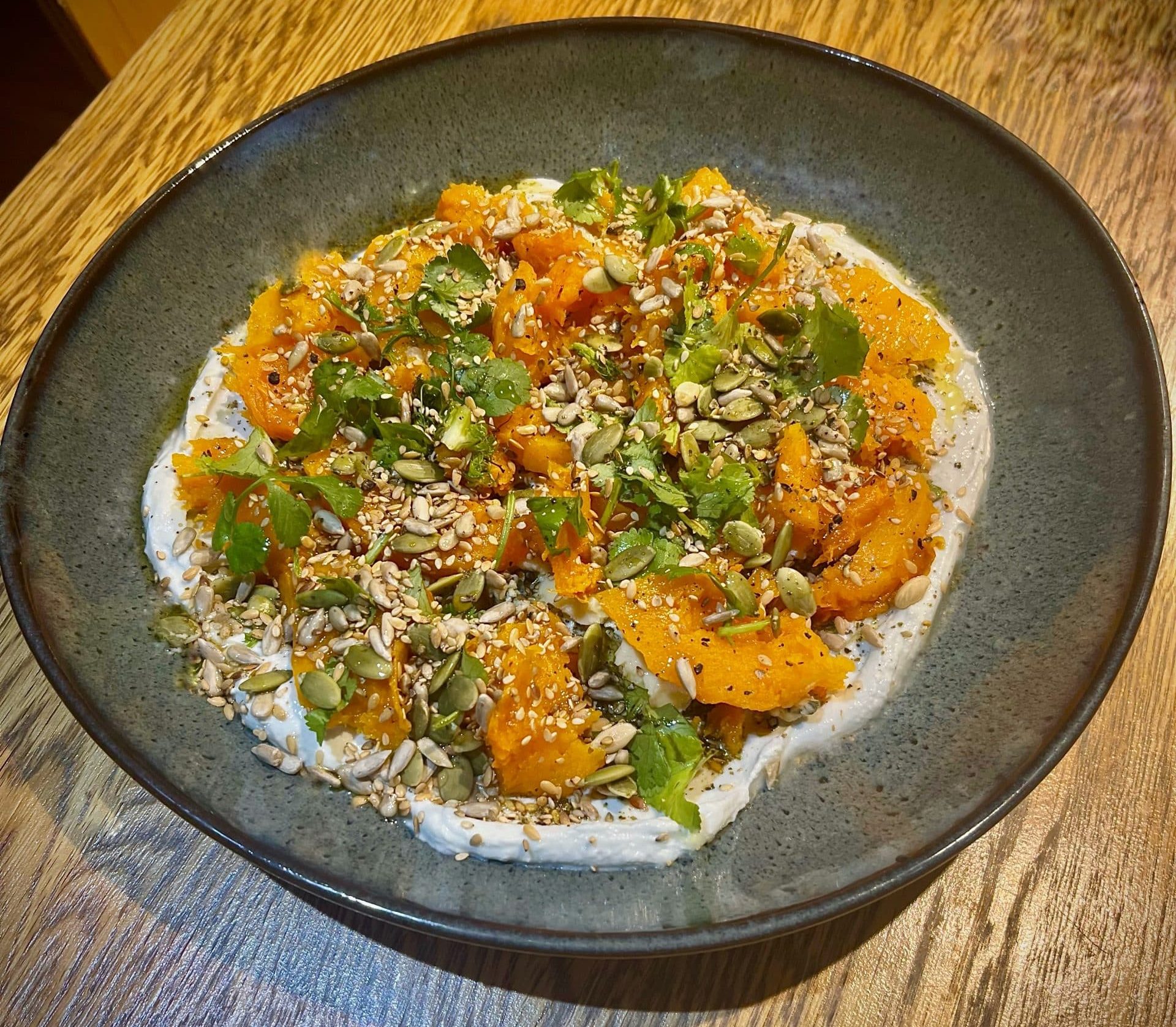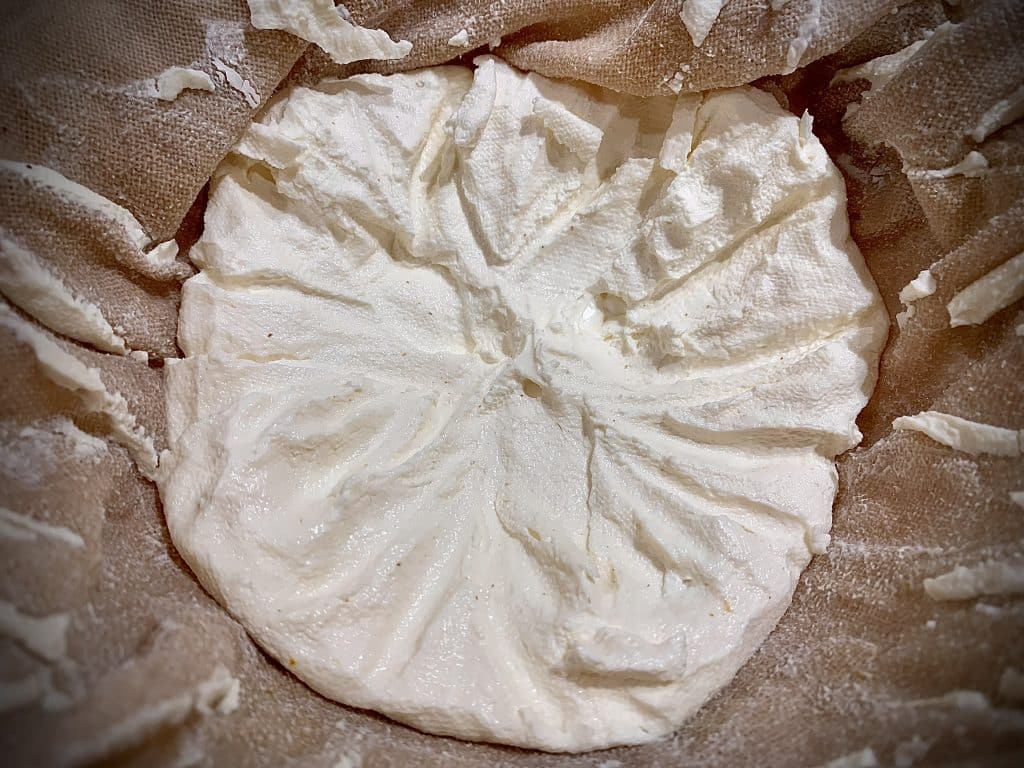Homemade labneh

If you’re looking for a quick and easy cheese to make at home that is full of flavour, then labneh couldn’t be simpler.
Labneh is a thick, smooth and creamy cheese made from strained yogurt. Popular in the Middle East, it requires only two ingredients – yogurt and salt – and a little bit of patience.
How to make labneh
Line a sieve with cheesecloth or a clean tea towel and place over a large bowl. I pour boiling water over the cloth first to sterilise it.
Empty a large tub of full fat yogurt into the middle of the cloth and stir in a teaspoon of fine salt. Draw the sides of the cloth up around the mixture and secure with an elastic band to keep everything in place. You can also weigh the cloth down with a few tin cans set over a plate to drain even more liquid from your labneh.
Then leave the yogurt in the fridge or a cool larder for at least 12 hours and up to 48 hours. The longer you leave it, the firmer the labneh will be. During this time, the liquid whey will drain out from the yogurt and collect in the bottom of the bowl. Don’t chuck this away – whey has many uses.
Once your labneh has firmed up, transfer from the cloth to a bowl or container. If you’re not planning to use it immediately, your labneh can be stored in the fridge for up to 5 days, with a layer of olive oil on the top to stop it spoiling. You could even shape it into balls and submerge in a jar of olive oil, with flavourings like dried chilli, rosemary or thyme.


Serving suggestions
You can serve your labneh with stewed fruit, honey and porridge or muesli for breakfast but I prefer to use it as the base for savoury dishes.
Labneh and slow roasted vegetables
Preheat an oven to 160C/gas mark 3. Halve a tub of cherry tomatoes and place in a baking tray with a few garlic cloves, rosemary, thyme, salt, pepper and a drizzle of olive oil. Roast in the oven for an hour before allowing to cool slightly.
Spoon a layer of labneh onto a serving dish and top with the roasted tomatoes and herb oil. I make the oil with whatever greens or herbs I have in the fridge. Blend with the roasted cloves of garlic, lemon zest, olive oil and a teaspoon of salt in a food processor. Any leftover tomatoes and the herb oil will keep in the fridge for a few days.
Roasted butternut squash with labneh, seeds and dukkah (pictured above)
Cut the squash into quarters and remove the seeds. Add to a baking tray and drizzle with 2 tablespoons of olive oil. Roast in the oven at 180c/gas mark 4 for about 40 minutes to 1 hour, or until the squash is soft and the skin is starting to blister. Allow to cool slightly before removing the skin and cutting the squash into cubes.
Make the dukkah by whizzing up a mix of nuts, seeds and spices in a food processor. I like to use a mixture of sunflower seeds, pine nuts and pumpkin seeds with cumin, fennel and coriander seeds. Top the labneh with the squash pieces, followed by a drizzle of honey. Then add the dukkak, some whole pumpkin and sunflower seeds and fresh coriander leaves. Serve alongside flatbreads.
Labneh with spiced chickpeas and pickled chillies
I make a batter from 250g gram flour, 30g cornflour, 1 teaspoon paprika, 1 teaspoon cumin, 1 teaspoon curry powder, a pinch of salt and 300ml lager. Add a drained can of chickpeas to the batter and stir to combine.
Heat 3 tbsp of vegetable oil in a frying pan on a medium heat. When the oil shimmers add the chickpeas to the pan in batches. Fry until golden, remove with a slotted spoon and drain on kitchen paper.
Top the labneh with the fried chickpeas, coriander leaves, pickled red chillies and pomegranate seeds. Serve alongside naan bread.
This is such an easy, cheap and versatile way to add flavour to a range of different dishes. I hope you have a go at making labneh at home and use it as a staple in your own recipes.